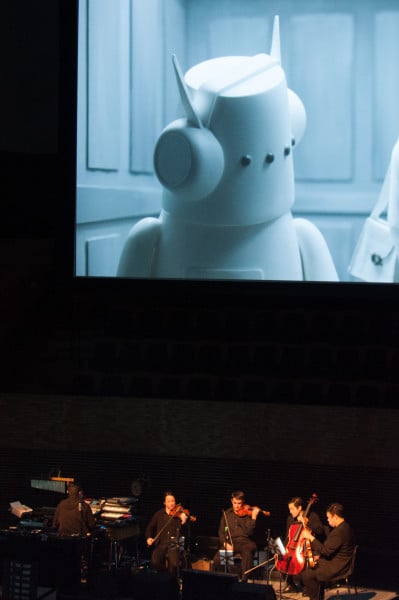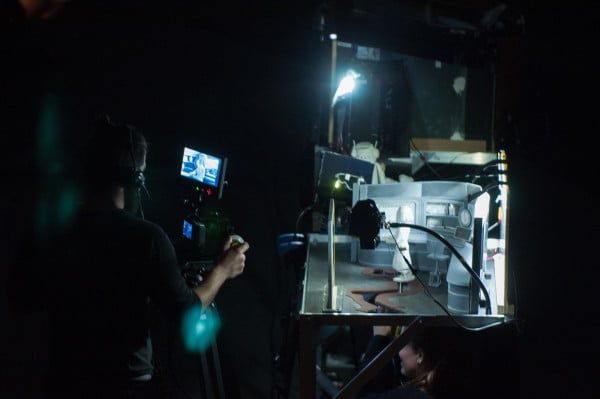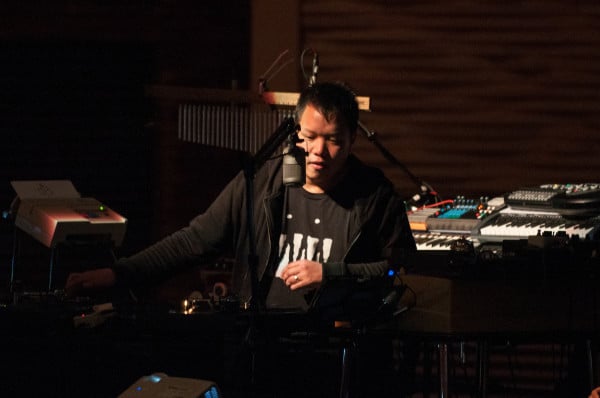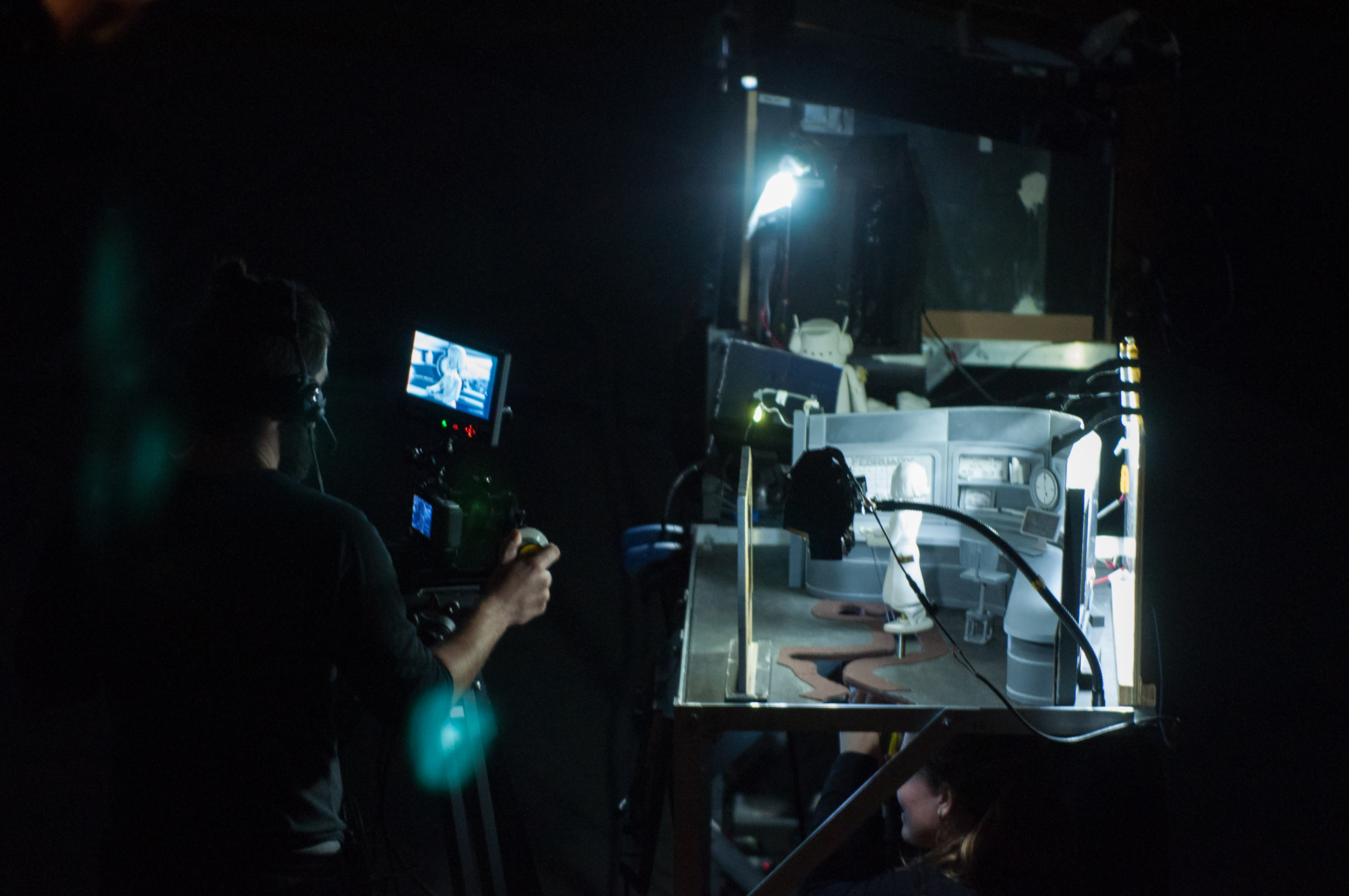
An adorable marshmallow-headed robot falls in love with a beautiful human scientist. That’s the gist of the plot in “Nufonia Must Fall,” but it comes nowhere close to a justifiable summary.
That’s because “Nufonia” is an intricate multimedia production, and the many layers of craftsmanship that go into its live performance are the backbone of its charm. Created by the Canadian turntablist and graphic novelist Kid Koala (Eric San), “Nufonia” is performed live with a team of puppeteers, a string quartet and a film crew. The characters, first imagined over a decade ago in San’s 2003 graphic novel of the same name, are here rendered as monochrome puppets, living in a dull miniature city with dull lives, at least to begin with.
The plot is charmingly simple, and has a deep sense of relatability. Aided by the accompaniment of the Afiara String Quartet, we feel deeply for the robot’s heartbreaks and triumphs as it struggles with obsolescence and love. We root for the little guy as it haplessly runs the gamut of tragedy: two lost jobs (to the same rival, the triply efficient, six-armed Hexabot), a car accident and a broken heart.

Still, the story is almost secondary to its staging and creation, which are rather uniquely one and the same. The stage is set up to operate more as a workshop than a traditional performance space, as San and the string section create the soundtrack in the back while a film crew trails a team of puppeteers in the foreground, running between eight or so miniature sets and backdrops to produce a live silent film, projected onto the hall’s main screen. In a trailer for the production, San refers to this complexity as an added “five layers of danger,” and the effect is a constant sense of playful apprehension, like watching someone dance across a trapeze — while juggling torches.
Yet nothing goes wrong after all. In fact, the show plays out with so few flaws that you’d be forgiven for thinking you were watching a Pixar film (if Wall-E looked like a marshmallow the parallels would be even more obvious). But the silent bustle on stage is a constant reminder that everything before you is being crafted live. The entire piece is simultaneously acted, soundtracked, directed and edited by the small crew working below the screen.
The show’s uniquely intricate staging lends both a sense of charm and danger, not unlike watching San or any other old school DJ work the turntables. Both “Nufonia” and San’s DJ gigs require an impeccable sense of timing and a knack for mixing media. Think of the former as the classic love story, remixed.

The performance’s soundtrack is also delightful, weaving through our robot hero’s arc with a melancholy, swelling refrain, tense moments of dissonance and quick-bowed jabs in the spirit of Hitchcock. The quartet also doubles as the robot’s emotive voice, expressing all necessary intonations like an acoustic R2-D2.
“Nufonia” was billed as part of Stanford Live’s family series, and indeed, plenty of kids under 10 had better seats than I did. The story, with all its romantic innocence and simplicity, plays out like a fairytale. But unlike, say, a Disney movie, we get a sense for the very human aspects of its creation. The people behind the project become as much a part of the experience as the puppets. It’s easy for anyone, young or old, to appreciate art. “Nufonia” makes us appreciate the artistry, as well.
Contact Benjamin Sorensen at bcsoren ‘at’ stanford.edu.
